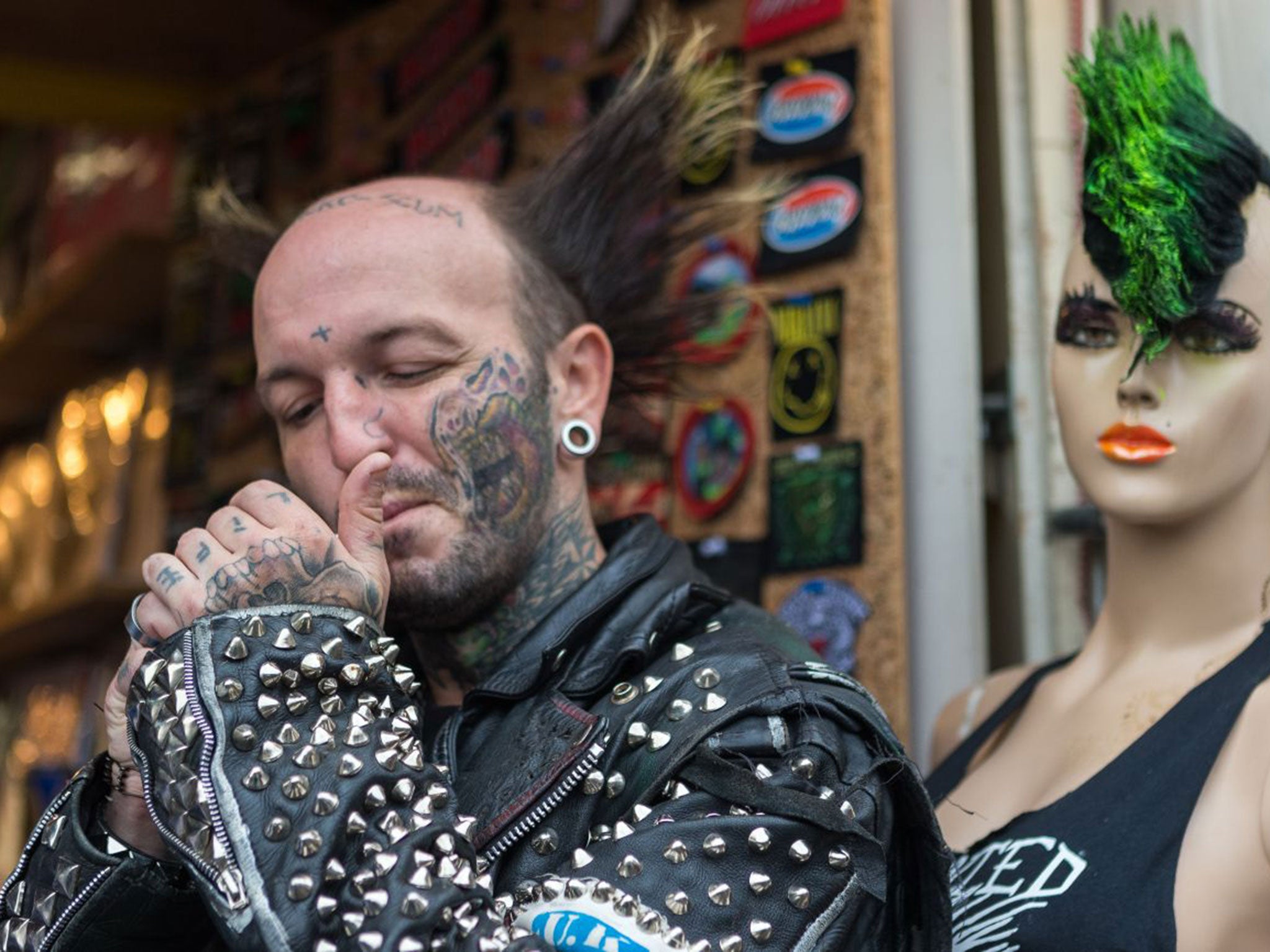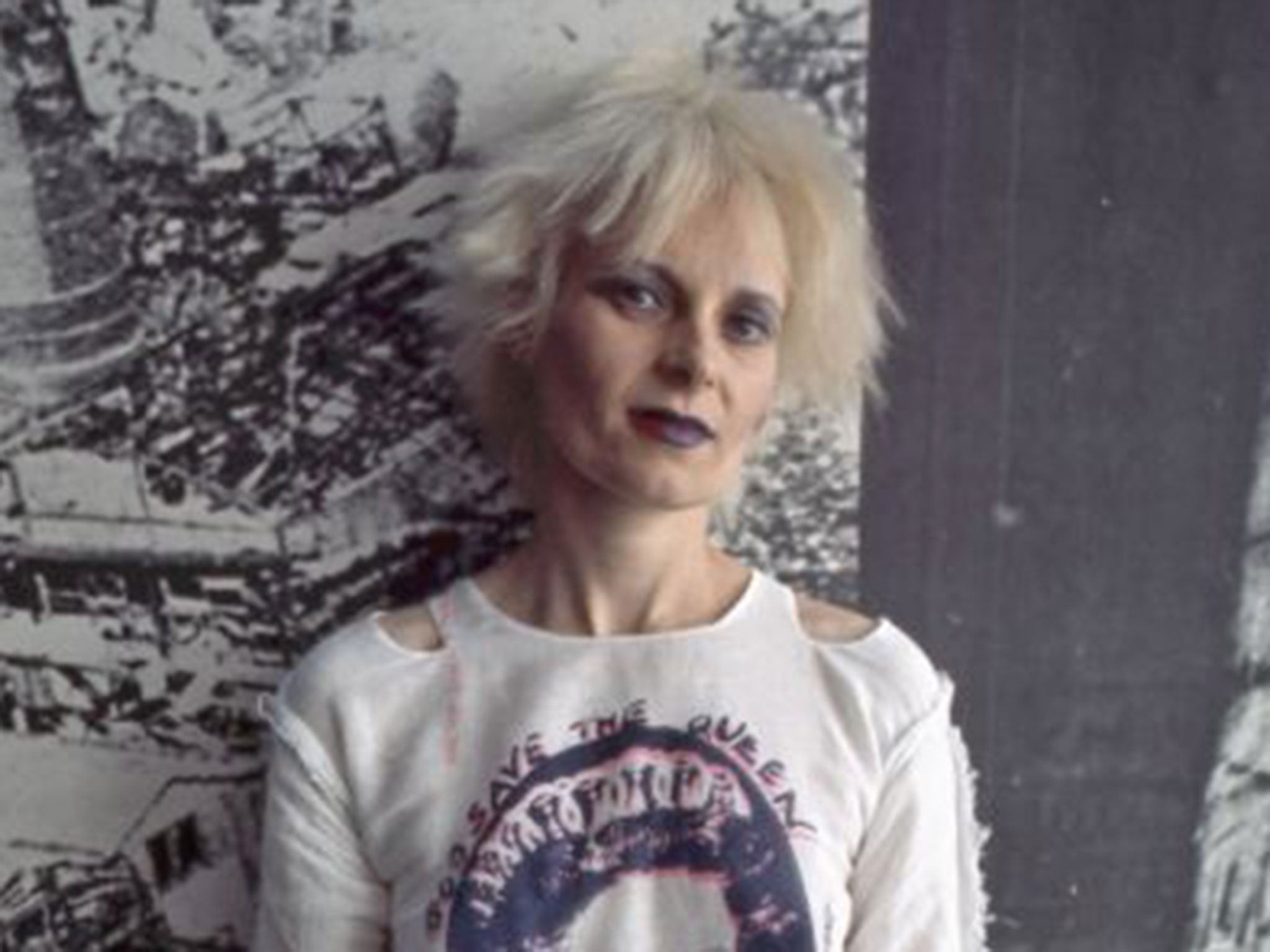From Elvis Presley to Russell Brand, via punk, rebellion makes the ideal consumer-durable
Like many later musical movements, Angry Young Men barely existed outside newspapers

Your support helps us to tell the story
From reproductive rights to climate change to Big Tech, The Independent is on the ground when the story is developing. Whether it's investigating the financials of Elon Musk's pro-Trump PAC or producing our latest documentary, 'The A Word', which shines a light on the American women fighting for reproductive rights, we know how important it is to parse out the facts from the messaging.
At such a critical moment in US history, we need reporters on the ground. Your donation allows us to keep sending journalists to speak to both sides of the story.
The Independent is trusted by Americans across the entire political spectrum. And unlike many other quality news outlets, we choose not to lock Americans out of our reporting and analysis with paywalls. We believe quality journalism should be available to everyone, paid for by those who can afford it.
Your support makes all the difference.The idea of the "revolt into style" was first given formal expression by Thom Gunn in a not entirely complimentary 1950s poem about Elvis Presley (“Distorting hackneyed words in hackneyed songs/He turns revolt into a style ...”).
The phrase then provided the title of George Melly’s celebrated 1970 study of the music business and subsequently went on to enjoy a long afterlife in both the more socially aware forms of music journalism and in the music itself – see, for example, the classic single of the same name by Bill Nelson: “Revolt into Style” (1979) complains about revivalism, the persistence of bygone youth cults and the lack of anything genuinely new.
At the heart of the revolt into style lies the suggestion that any kind of cultural rebellion – let alone political insurrection – is pretty sure to be anaesthetised by the processes through which the modern age typically brings news of it to the public. The media, according to this analysis, is a double-edged sword. On the one hand, the cultural rebel cannot do without it, as no other institution can transmit the glad tidings to the world at large with quite the same level of attack. On the other, faced with anything in the least threatening to the status quo, pundits and communicators, whether in television studios or on social media, instantly set to work to popularise, dilute and sanitise: all that will remain is a stance and, in the case of popular music, some rather fetching clothes.
The pop-cultural history of the 1960s and 1970s is, consequently, littered with the bones of well-meaning insurrectionaries who attempted to stick it to the man and ended up advertising fast-food restaurants. The original hippy movement, for example, was declared dead by its founders as early as the end of 1967 amid a growing awareness that large parts of American youth now aimed to go to San Francisco wearing flowers in their hair, while a friend of mine who sang in one of the first British punk bands reckoned that the movement was effectively over by the time The Damned released their first single in the autumn of 1976 – this being the moment that the rag trade began the mass production of bondage trousers and tabloid newspapers ran inflammatory articles about not flinging this filth at our kids.
Naturally, it was impossible not to remember the revolt into style when attending to the considerable fuss that has accompanied the simultaneous publication of autobiographies by two of the most notorious survivors of 1976 – John Lydon’s Anger is an Energy and the memoirs of the former punk couturier Vivienne Westwood. Generally speaking, Lydon tends to be praised for his verve and honesty; Dame Vivienne, alas, has been accused of putting her name to a rambling and somewhat inaccurate volume which, inter alia, criticises living people the author presumed to be dead. And yet the real interest of the books lies not in their revelations – these are fairly tame – but in the mythological trappings with which both come liberally decked.

Here, in fact, are a pair of self-proclaimed rebels convinced that they succeeded in effecting change without becoming contaminated by the businesses in which they operated. Lydon, in particular, is emphatic on this point. “I think it was understood that Johnny Rotten weren’t no back-down cunt” he remarks at one stage. “This boy don’t surrender. And I won through. I did.” Both the Sex Pistols and, if we are to believe their lyricist, Lydon’s subsequent ensemble Public Image Limited, changed the shape of popular music, and to accuse our man of “selling out” on the basis of his butter adverts and an appearance on I’m A Celebrity ... Get Me Out Of Here! is, at any rate from the Lydon angle, to miss the point.
But it is possible to argue that while Lydon may very well emerge from an account of his life with his integrity intact – something only a very small proportion of autobiographers ever manages to pull off – the influence of the musical movement he inspired was painfully indirect. Certainly the entity known as “punk” sharpened a few late-’70s edges, and a sent a few progressive rock bands off into a decent obscurity, but its real legacy was to open up a space for artists who drew briefly on its energy levels and minimalist arrangements (Elvis Costello, Paul Weller, Howard Devoto, Mark E Smith) before going on to fashion careers that in most cases marched off along very different avenues.
The same qualifications can be filed about more exalted movements in the arts, and in particular one or two that were going strong at the time Thom Gunn first set pen to paper. A quarter of a century ago, as the talents involved limped into late middle age, a great deal of broadsheet newspaper ink was expended in analysing just how badly the Angry Young Men of the later 1950s – Kingsley Amis, John Osborne et al – had let us all down by leaping into the arms of an establishment they had once presumed to criticise, accepting knighthoods and dining with Margaret Thatcher. And yet, like many of the musical movements of later decades, the Angry Young Men as a cohesive unit barely existed outside newspaper arts pages. As with the Bright Young Things of the 1920s who populate Evelyn Waugh’s novels, they were, beyond the most rudimentary organisational level, an invention of journalists.
To examine the arts world of the 1950s, in fact, is to be conscious of a landscape whose demarcations are being imposed on it from above, in which the only quality that is truly prized is up-to-dateness and the authentic transformations in taste that sometimes accompany a war or a revolution are painfully lacking: a process of artistic emasculation, perhaps, but one in which artists more or less cheerfully collude as the price of the exposure it brings them.
On the other hand, developments in the novel and theatre are necessarily small scale, and of interest only to tiny minorities. What about “culture” as it affects the great majority of the population and the cultural or political movements booked to change our lives? One could argue that the New Labour project of the late 1990s was a classic example of the revolt into style: the glimmerings, or the promise, of a radical shift in the way that the body politic went about its business swiftly dissipated into a riot of nonsense about Cool Britannias, celebrity bunfights at No 10 and shiny surfaces crowding out underlying substance. And, at the risk of being thought a spoilsport one could also argue that Russell Brand’s cavortings in support of his new book Revolution risk going exactly the same way – certainly, his last Guardian photo-shoot included thank-yous to portraitist, groomer, personal stylist and jeweller.
It is not Mr Brand’s fault, or not quite, for if he is intelligent enough to know that you cannot touch pitch without being defiled by it, then he is also intelligent enough to realise that exposure in the modern age depends on your having something ripe for defilement. At the same time, one of the tricks of late capitalism is its habit of transforming an element of genuinely popular culture into an element of mass consumer culture without either side knowing the transformation has taken place: an imposture which Russell Brand, like John Lydon and Kingsley Amis before him, finds it well-nigh impossible to resist.
Join our commenting forum
Join thought-provoking conversations, follow other Independent readers and see their replies
Comments